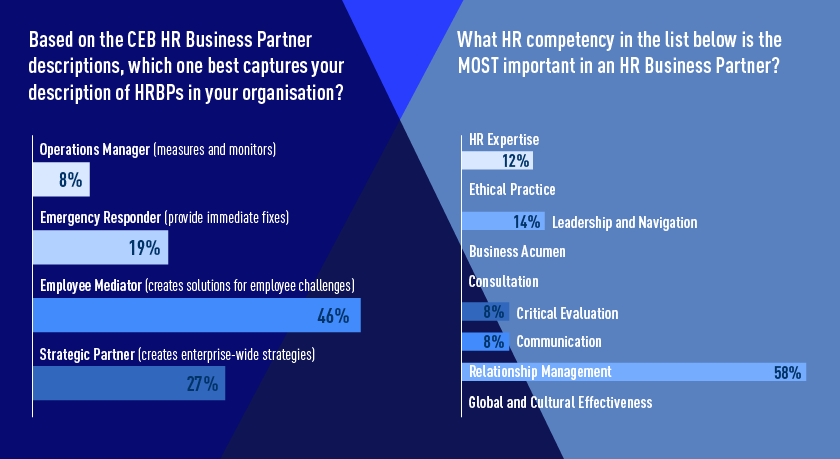insideMOBILITY Global Heads Summit, London 2019: Event Highlights

The insideMOBILITY 2019 series came to a close last week in London. On the South Bank of the river Thames, around 40 global heads of mobility, representing 34 companies from five different countries, convened at Sea Containers House for a day of discussions, exercises and peer-to-peer workshops.
With almost 60% of the delegates having worked in global mobility for over ten years, the event tapped into a wealth of experience and knowledge, while also attracting high-profile speakers to help tackle the summit agenda. Topics included EU legislation, mobility manager challenges, diversity in mobility and the role of the HR Business Partner.
Navigating compliance and complexity
First up, Daida Hadzic, Director at KPMG’s EU Tax Centre, took to the stage to discuss the very topical issue of posted workers in Europe.
The EU Directive on Posted Workers, explained Hadzic, sets out obligations for companies sending employees on short-term assignments to EU member states. But with no consensus around implementation, enforcement varies from one country to another. There’s also no coordination between posted worker registration and social security applications.
In a lively opening session, Hadzic observed that the lack of common approach among host countries creates a minefield of complexity and risk. “It’s an incredibly difficult landscape to navigate,” she said, describing how companies who fail to comply face serious financial, operational and reputational damage. At the same time, as one delegate pointed out, overzealous enforcement of the rules goes against the principle of free movement.
According to Hadzic, companies need to be aware that:
- Business meetings, fairs and conferences do not fall within the scope of the legislation
- The EU Directive will still apply post-Brexit
- In June 2020, a new Directive will be implemented, with changes around assignment timescales and remuneration
- In support of the new Directive, the European Labour Authority (ELA) has been created to enforce mobility rules and facilitate joint labor inspections
Outlining possible solutions, Hadzic advised that global mobility managers should:
- Evaluate the level of risk on a country-by-country basis
- Register workers from day one in countries where enforcement is stringent
- Engage key stakeholders to establish responsibilities, process flows and data sources
- Use data analytics to shape mobility strategy
Understanding the mobility manager moments that matter
Next, in an interactive peer-to-peer workshop, delegates considered the pain points for mobility managers. How, they were asked, can managers address their day-to-day challenges to provide better outcomes for assignees and companies?
Transitioning from ‘reactive to proactive’ emerged as a key issue, as participants expressed a desire to take mobility to a more strategic level. Repatriation was cited as another major pain point, with businesses often losing employees post-assignment as they struggle to meet their demands.
To tackle these issues, delegates proposed the following measures:
- Partner Mobility with Leadership and Human Capital; this will ensure the mobility needs of a business are understood from the top down.
- Enhance Mobility’s strategic insight by including mobility managers in key business meetings and breaking down departmental silos.
- Build a narrative for Mobility as an enabling body, rather than a tactical one.
- Plan and prepare for repatriation; by building relationships and managing expectations for returning assignees, businesses can minimize the impact, retain the talent, and harvest the knowledge gained.
What on earth has diversity got to do with mobility?
It’s a fair question. And here to answer it was writer, broadcaster and diversity consultant, Simon Fanshawe, OBE.
In a highly entertaining discussion, Fanshawe explained how diversity considerations are vital when moving individuals into other groups of people. Typically, decisions about recruitment, promotion and relocation are based on notions of quality. But, proposed Fanshawe, diversity provides more essential criteria.
Thinking about what a person will bring to a team through who they are, and the contribution to diversity they will make, is critical. And it’s an approach that’s backed by research, which shows that randomly selected groups perform better than deliberately selected groups.
“The best and the cleverest,” said Fanshawe, “are often the same and think the same, whereas random selection provides new thoughts and approaches. It’s the combination of difference – e.g. of cross-cultural, mixed-gender groups – that gives you the highest performance.”

Engaging with HRBPs
The HR Business Partner is a vital stakeholder for the global mobility manager. So how, asked Graebel’s Beverly King MCIPD, do we engage them better?
To find out, in this final session delegates pondered the four key personas and characteristics of the HRBP, as defined by CEB/Gartner. A series of poll questions revealed that:
- 46% of delegates put ‘employee mediator’ as the top descriptor for HRBPs in their organisation
- 58% of delegates thought ‘relationship management’ was the most important competency in an HRBP
- 52% of delegates thought ‘mobility expertise’ was the competency HRBPs most valued in mobility professionals
From these results, delegates concluded that open communication around what HRBPs want and need, and what data and information mobility managers can provide, is essential. Such efforts will enhance the working relationship and deliver better results by creating improved proximity between mobility and HR.
insideMOBILITY continues in 2020
The next scheduled insideMOBILITY event will be held on 24-26 February 2020 in Atlanta, US , followed by insideMOBILITY Frankfurt, scheduled for 16-17 June, 2020. If you’re an in-house HR, Reward or Global Mobility professional, register now to take advantage of these exciting opportunities to meet, share and connect!